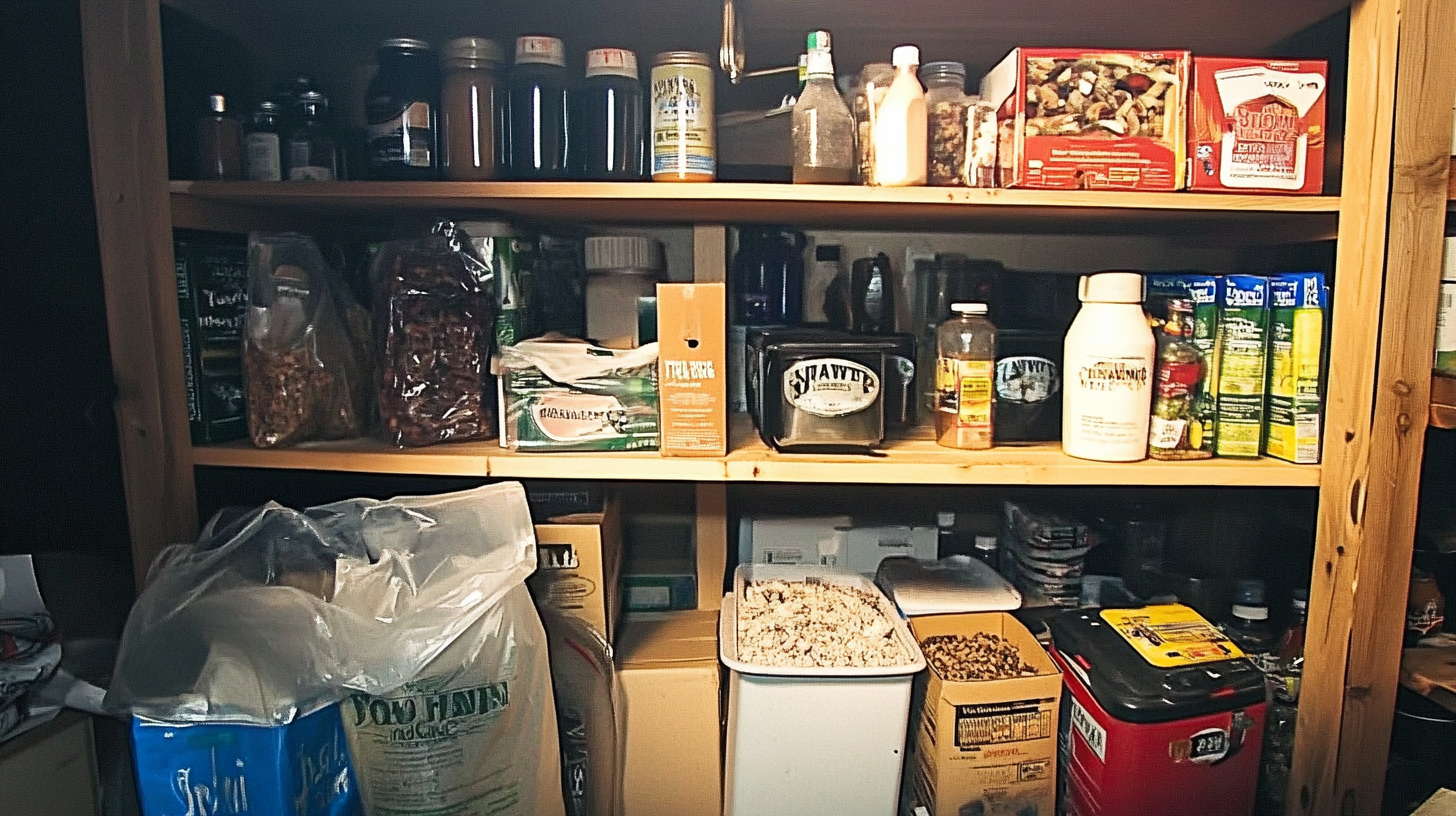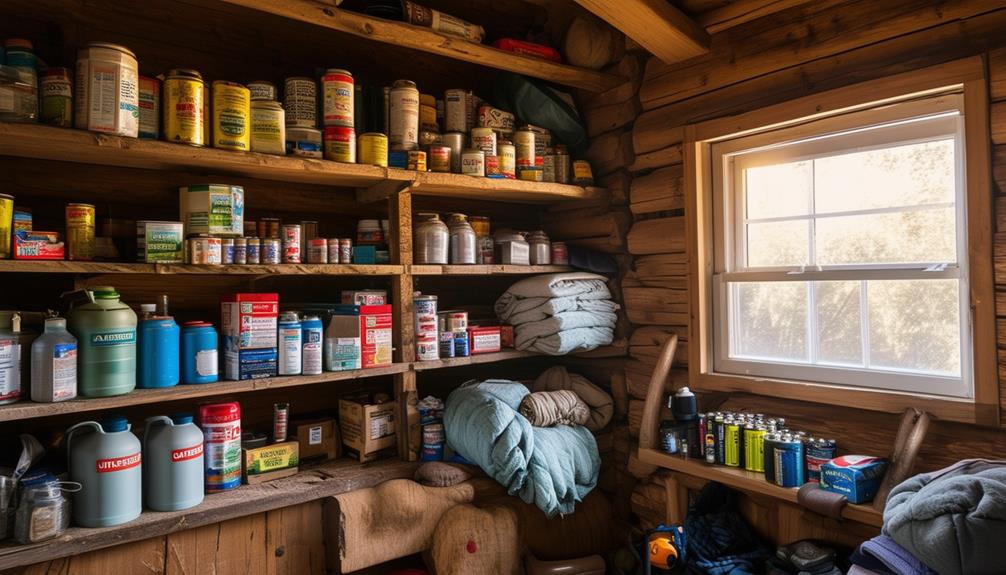Hawaii Preppers: Essential Strategies for Island Resilience

Preparing for emergencies takes on a unique flavor in Hawaii. The Aloha State faces distinct challenges compared to other parts of America. Its isolation in the Pacific Ocean and tropical climate create special considerations for those looking to be ready for potential disasters.
Hawaii's preppers need to think about threats like tsunamis, volcanic eruptions, and tropical storms. They also have to plan for possible disruptions to shipping and supply chains that could impact food and essential goods. The state's geography and location require tailored approaches to emergency preparedness that differ from strategies used on the mainland.
Hawaii from a Prepper's Angle
Weather Patterns
Hawaii has four distinct climate zones. At sea level, summer temps range from 84-88°F, while winter sees 79-83°F. Yearly rainfall varies widely, from 7.4 to 404.4 inches. This mix of climates can pose unique challenges for preppers.
Eating and Drinking
90% of Hawaii's water comes from underground sources. The islands' geology creates a freshwater layer on top of seawater, which is easy to access.
Food-wise, Hawaii has moved away from sugar cane. Smaller crops like papaya and coffee are now more common. Many locals rely on the islands' natural food sources.
Government and Laws
Hawaii leans strongly Democratic. The state sends two Democratic senators to Congress. Local issues tend to be more important to native Hawaiians than national ones.
People Count
Hawaii has about 1.5 million residents. This is small for a state - similar to Dallas, Texas. The population may shrink as people get older. The average age is 42.7 years, which is higher than the U.S. average.
Hawaii is very diverse:
- 36.9% Asian
- 22% White
- 19.4% Other races
- 10.5% Hispanic
- 9.4% Native Hawaiian
Most people (63%) are Christian.
Safety Issues
Violent crime is low in Hawaii. Your odds of being a victim are 1 in 407. Murder rates are well below the U.S. average.
Property crime is more common. You have a 1 in 43 chance of being a victim. Burglary and car theft rates are much higher than the U.S. average.
Natural Hazards in Hawaii
Hawaii faces many natural risks due to its location and geography. Volcanic activity is a major concern. The islands have four active volcanoes that could erupt at any time. Kilauea has been erupting non-stop since 1983. Maunaloa's last eruption in 1984 caused air pollution issues. Loihi has been active since 1996.
Earthquakes often happen along with volcanic activity. Hawaii gets thousands of quakes each year. Most are small, but some can be felt across multiple islands. A big 7.9 magnitude quake hit in 1868, with aftershocks still felt today.
Tsunamis have caused major damage in Hawaii's past. In 1946, a huge wave from an Alaska earthquake killed 159 people in Hawaii. The islands had no warning system then. In 1960, another tsunami from a Chile quake destroyed much of downtown Hilo and took 61 lives.
Hurricanes can also strike Hawaii. Hurricane Iniki in 1992 was the strongest to hit the state. It killed 6 people and caused $1.8 billion in damage. The powerful winds uprooted trees and wrecked buildings across Kauai.
Other threats include:
- Flooding
- Lava flows
- Tornadoes
- Waterspouts
A rare waterspout hit Hawaii in 2016. While it did little damage, it showed how dangerous water-based tornadoes can be.
Hawaii's beauty comes with risks. Residents and visitors must be ready for many types of natural events. The state works to improve warning systems and emergency plans. But living in paradise means accepting some level of danger from nature's forces.
Key Natural Hazards in Hawaii:
| Hazard | Frequency | Potential Impact |
|---|---|---|
| Volcanic eruptions | Ongoing | High |
| Earthquakes | Very frequent | Low to moderate |
| Tsunamis | Rare | Very high |
| Hurricanes | Occasional | High |
| Flooding | Seasonal | Moderate |
| Lava flows | Ongoing in some areas | High locally |
Being ready for these events is key. Having an emergency kit, knowing evacuation routes, and staying informed about warnings can help keep people safe. While Hawaii's natural beauty draws many, its wild side demands respect and care.
Military Significance

Hawaii's position in the Pacific Ocean makes it a key strategic location for the United States military. This importance brings both benefits and risks to the islands and their residents.
The attack on Pearl Harbor in 1941 showed how Hawaii's location can put it at the center of global conflicts. On that day, 2,335 American soldiers and 68 civilians lost their lives. This event pushed the U.S. into World War II.
Military activity in Hawaii can also lead to accidents. In 1944, a big explosion happened during a practice for an invasion. This incident, known as the West Loch Disaster, hurt 396 people and killed 163 sailors.
Today, Hawaii remains vital for U.S. defense. About 17% of Hawaii's people are linked to the military. The armed forces use about 6% of the land. This large presence affects daily life on the islands.
Hawaii's role in U.S. defense strategy may expose it to future risks:
- Possible targets in conflicts
- Spy activities
- Accidents from military operations
But the military presence also brings some positives:
- More jobs
- Money for the local economy
- Extra help during natural disasters
The U.S. government sees Hawaii as crucial for keeping peace in the Pacific. China's growing power in the region makes Hawaii's position even more important. The lessons from Pearl Harbor are still relevant today.
People living in Hawaii should think about these factors when making safety plans. The mix of natural and human-made risks makes Hawaii unique. Being ready for different types of events is key for those who call these islands home.
Hawaii Preparation Tactics
Staying Put
Keeping safe in Hawaii requires careful planning. Living on an island far from the mainland brings unique challenges. Preppers need to be ready for long-term disruptions.
Setting up warning systems is crucial. Modern technology gives ample notice for many disasters. Preppers should have multiple ways to get alerts:
- Weather radios
- Emergency alert apps
- Social connections
A good weather radio is essential gear. Look for models with:
- NOAA weather bands
- Multiple power sources (solar, hand crank, batteries)
- Built-in flashlight and phone charger
Staying informed about world events is also important. Geopolitical tensions could impact Hawaii. Keep an eye on news from the Pacific region.
Self-reliance is key for island preppers. Any supply chain issues will hit hard. Set up systems to grow food and collect water:
- Hydroponic gardens
- Rainwater collection
- Small livestock
These provide both daily savings and disaster readiness.
Leaving Home
Having detailed maps is crucial for any bug out plan. Paper maps are best - they work without power. The DeLorme Atlas and Gazetteer series offers good state-level maps.
For Hawaii preppers, boats are the top bug out option. Sailboats are ideal:
- No fuel needed
- Can travel long distances
- Fishing access
Can't afford a boat? Network with other preppers. Someone may have space on their vessel. Have a destination in mind if you need to sail away.
If water evacuation isn't possible, head for high ground. Hawaii's mountains offer refuge from:
- Tsunamis
- Volcanic activity
- Hurricanes
Scout elevated locations in advance. Learn the terrain and wildlife. Cache supplies there if possible.
Setting up supply caches is smart for island preppers. Resources may run low quickly in a disaster. Hide supplies where only you can find them.
Focus on survival systems, not just gear:
- Water collection methods
- Fishing equipment
- Hunting tools
Think through how you'll meet basic needs if normal systems fail.
More Resources for Hawaii Preppers

Hawaii preppers can find many helpful resources to expand their knowledge and skills. The Hawaii Prepper Network on Facebook is a great place to connect with like-minded individuals and discuss local prepping topics. For those interested in traditional Hawaiian survival methods, the Hoea Initiative offers courses teaching native techniques.
Kauai Hiking Tours provides survival classes focused on jungle environments. To stay informed about potential threats, preppers can check the State Department's updates on Chinese military activities. The NOAA Tsunami Warning Center is essential for coastal residents to monitor tsunami risks. Volcano watchers should follow USGS updates for the latest volcanic activity information.
These resources cover a range of prepping needs specific to Hawaii's unique geography and potential hazards. By tapping into local knowledge and official information sources, preppers can better prepare for various scenarios.
Common Questions About Prepping in Hawaii

Key Supplies for Hawaii Emergency Readiness
A basic Hawaii prep kit should include:
- 14-day supply of non-perishable food
- 1 gallon of water per person per day
- First aid kit
- Flashlights and extra batteries
- Battery-powered or hand-crank radio
- Whistle to signal for help
- Dust masks and plastic sheeting
- Moist towelettes and garbage bags
- Wrench or pliers to turn off utilities
- Manual can opener
- Cell phone with chargers and backup battery
- Important documents in a waterproof container
How Hawaii's Geography Shapes Prepping Plans
Hawaii's island nature creates unique prepping needs:
- Limited evacuation options
- Potential supply chain disruptions
- Need for longer-term self-sufficiency
- Risk of isolation from outside help
- Importance of marine safety gear
- Focus on tropical climate readiness
Preppers must plan for extended periods without mainland support.
Food Storage Tips for Hawaii's Tropical Climate
To keep food safe in Hawaii's warm, humid environment:
- Use airtight containers to prevent moisture
- Add oxygen absorbers to dry goods
- Rotate stock regularly
- Keep food off the ground on pallets
- Use a cool, dark storage area if possible
- Consider freeze-dried or dehydrated options
- Vacuum seal when appropriate
- Be aware of shorter shelf lives in tropical conditions
Preparing for Hawaii's Main Natural Threats
Key disasters to prep for in Hawaii include:
- Hurricanes and tropical storms
- Tsunamis
- Volcanic eruptions
- Earthquakes
- Flooding
Plans should cover evacuation routes, emergency shelter locations, and methods to secure homes against high winds and water damage.
Ensuring Water Security for Hawaii Preppers
Water preparedness in Hawaii involves:
- Storing 1-3 gallons per person per day
- Rainwater collection systems
- Water purification methods (filters, tablets, boiling)
- Knowledge of local freshwater sources
- Containers for water transport and storage
- Regular rotation of stored water
Having multiple water sources is crucial for long-term survival.
Hawaii Prepper Groups and Community Readiness
Several prepper and disaster readiness groups exist in Hawaii:
- Hawaii Preppers Network
- Oahu Preppers Group
- Big Island Preppers
- Maui Preparedness Group
These groups offer:
- Local knowledge sharing
- Group purchasing power
- Community support networks
- Joint training exercises
- Resource pooling
Joining a local group can enhance individual preparedness efforts.




